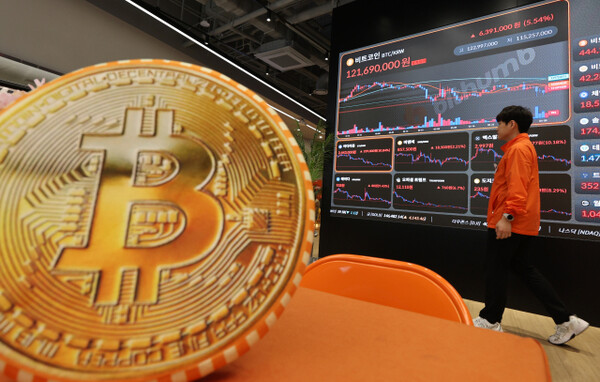
More than half of domestic adults have invested in virtual assets such as Bitcoin. Over half of virtual asset investors have experienced profits, and one in five have suffered damages. The top type of damage is system failures at virtual asset exchanges.
According to a survey conducted by the Korea Financial Consumer Protection Foundation on 2,500 adults aged 19-69 living in Seoul, Gyeonggi, and six metropolitan cities, the percentage of those currently holding or having previously held virtual assets is 54.7%. This is an increase of nearly 2 percentage points compared to the previous year (53%).
Seven out of ten respondents (69.9%) stated that they hold virtual assets for 'investment purposes'. Among those who cited investment as the reason for holding virtual assets, 38% pointed to 'asset growth'. This was followed by 'managing spare funds (20.3%)' and 'saving a lump sum (15%)'.
Particularly, those with higher monthly household income showed a tendency to hold virtual assets for profit. Respondents with a monthly household income of 5 million won or less had a 50% rate of investing for profit, while those earning over 5 million won had a rate of around 70%.
More than half of virtual asset investors (51.6%) reported making profits. Three out of five respondents (58.7%) were small investors who invested less than 10 million won. The most common expected investment period was less than 1 year (60.8%). The majority of past investors (84.9%) responded that they invested for less than a year, indicating a strong trend of short-term trading. Among these, 39% were ultra-short-term investors of less than 3 months.
Investors are investing in an average of 3.1 types of virtual assets. Bitcoin (76%) and Ethereum (52.8%) had notably high ownership rates. This was followed by XRP (32.2%), Dogecoin (24.6%), and Solana (14.7%).
Investment items showed different patterns based on gender. Female investors had higher proportions of popular and relatively stable virtual assets like Bitcoin and Ethereum. In investment tendency analysis, female investors (75.1%) showed higher stability or stability-seeking tendencies compared to male investors (55.4%).
The most important factor in choosing exchanges and investment items was 'trading volume'. Among respondents with exchange usage experience, half (48.5%) considered trading volume important when selecting an exchange. When selecting items (multiple responses), 51.9% cited trading volume as the primary factor. The market share of large virtual asset exchanges like Upbit and Bithumb exceeding 90% is also interpreted as a result of consumer preference based on trading volume.
However, one in five virtual asset holders (20.3%) were found to have suffered damages. The damage experience rate for those in their 60s was 25.3%, higher than the average. Among damage types (multiple responses), exchange-related damages (72.8%) accounted for the highest proportion. 'Leading room' damages that lure investors with false information and 'investment fraud' types that guide users to illegal exchanges showed response rates of 44.7% and 35.5% respectively.
Among exchange-related damage types, failing to sell on time due to system failures was the highest at 40.6%. Exchange closures (20.7%) and hacking (11.5%) were also included as exchange-related damage cases. 75.1% of damages were under 10 million won. Victims with damages under 1 million won accounted for 34.6%.
A majority (67.7%) of victims took no action to seek relief after suffering damages. Reasons for not taking action included 'believing no relief would be possible even if reported' at 47.8% and 'damages not being significant' at 36.2%.
When checking virtual asset understanding through 10 questions for all respondents, the average correct rate for virtual asset holders was only 41.1%. The overall respondent correct rate was even lower at 33.4%. As a result, respondents (63.1%) who were aware of the Virtual Asset User Protection Act pointed to strengthening punishment for fraudulent activities (26.8%) and enhancing exchange system and security (21.5%) as the top priorities for improvement.
The Korea Financial Consumer Protection Foundation stated, "Virtual asset holders show low understanding of the virtual asset market despite their investment experience" and emphasized "the need to monitor related regulations and legal changes and acquire basic concepts to make investment decisions".








